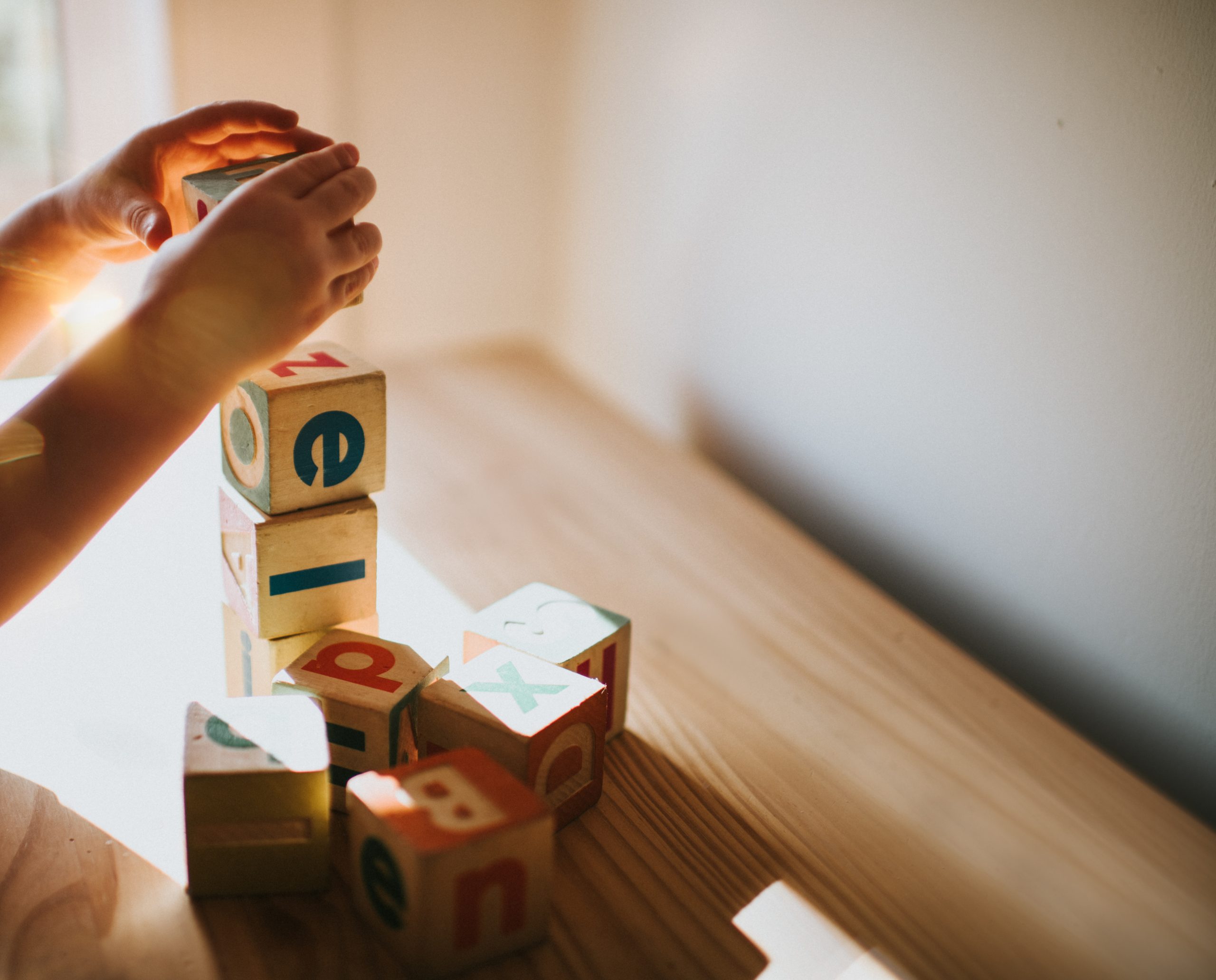Are wooden toys really better than plastic toys? We ask two experts, and the results may surprise you (plus 9 reasons to buy wooden)


Wooden toys have so much clout, don't they? As parents, we're sold the line that 'wooden toys are better than plastic toys' but, are they? We check with the experts...
Parents buy certain toys for all kinds of reasons, whether it's 'pester power' because their kids really want this year's top toy, or because they want a nice mix of active and passive toys or maybe they're keen to support certain types of play or maybe it's because they think one type (wooden) is better than another (plastic). Buying children’s toys is a question of short-term pain versus long-term gain.
Susie, founder of Resolve to Play tells us; "Wooden toys give much more sensory feedback to children, compared to plastic toys. The way that the grain of the wood feels, the weight of the toy, the smell, this allows children to learn more through touch, and smell - it's all richer than plastic, which all feels the same." And, mum-of-two, Kasey tells us; "I think popular toys have gone full circle. From the wooden toys of a hundred years ago to plastic toys that were almost universal when I was growing up in the 1990s - remember Mr Frosty? Well, now we’re suddenly back at a stage where wooden toys seem to be everywhere."
So, are wooden toys just a trend? Or is there actual scientific evidence behind it? Well – it’s a little bit of both we speak to Professor Sam Wass, child psychologist, Susie Robbins, founder of Resolve to Play, and Dr Amanda Gummer, founder of the Good Play Guide.
Are wooden toys better than plastic ones?
Not necessarily, no. Wooden toys are different to plastic toys and can offer much more in terms of safety, longevity, and better for the environment in general, here we go into it in a bit more detail. Dr Amanda tells us; "A well-balanced toy collection can include both wooden and plastic options and toys of different materials, each serving different needs. Plastic toys are great for bath-time playthings, as they are easier to keep clean and are more durable. The same for outdoor fun where they might be exposed to mud, water, and rough handling. Some wooden playthings are coated with materials including plastics, to make them safe and avoid splintering, which may affect their ability to be recycled with some plastics being recyclable and others not." Here are nine reasons why wooden toys are a great buy;
9 reasons wooden toys are a great buy
1. Safer for your child
When you’re buying a toy, whether it’s for your child or as a present for someone else, one of the first questions that probably comes to mind is, “Is this toy safe?”. Small parts that come away easily are a choking hazard and if the toy breaks for any reason, the sharp bits of plastic could cause injury.
Wooden toys on the other hand are well-made on the whole, rarely come with pieces that could easily be broken by a child and even adults would find them difficult to break. This means that on the whole, they’re a much safer go-to for a child’s toy, especially if the little one is under five years old.
Parenting advice, hot topics, best buys and family finance tips delivered straight to your inbox.
2. Better for the environment
According to statistics it's estimated that UK households throw away a staggering 100 billion pieces of plastic packaging a year, averaging 66 items per household per week. In 2021, 2.5 million metric tons of plastic packaging waste were generated in the UK. While the majority of this comes from plastic bottles, broken and wasted plastic materials from other things like toys make up some of that percentage.
So why not reduce, reuse, and recycle? Wooden toys are a great way to do your bit for the environment, without even having to do much at all.
Dr Amanda Gummer tells us; "For a long time, most toys have been made from plastic, but as we now know, this material has a detrimental effect on the environment, from its manufacture to its disposal. Another problem is the throwaway culture that has been adopted in recent decades which can affect everything we buy - and not just toys... With a growing range of products to choose from it’s becoming so much easier for parents to take small steps to sustainability and make smart choices when choosing toys."
By purchasing a wooden toy that’s sustainably sourced and made from certified wood, you’re playing a small part in reducing the amount of plastic waste. Many wooden toys can be bought secondhand and sanitised, so you’re reusing materials, and then when the toy has had its day - often a few generations down the line - they can be recycled easily as they’re made from natural materials.
3. They last longer
Every toy gets a bit of a run around from children, as they fling them out of pushchairs and highchairs, cots, and off the sofa, so it’s best to have a toy that can withstand a little bit of damage.
Susie tells us; "Wooden toys are more in vogue now than perhaps in the 90s and early naughties, where fast fashion and fast manufacturing took precedent.
"However, they have always been around - often long-lasting these wooden toys have been handed down through the generations as family childhood heirlooms. Montessori and Curiosity Approach settings have always wooden objects, rather than plastic as they allow the child a richer and fuller experience."
Plastic toys, even if they’re made from durable material, have the potential to shatter or if they have a mechanical element, to malfunction - just have a look at all the toys from the 90s that never made it. Wooden toys can withstand children’s energetic playing, however, it happens, as they’re quite simply made from stronger materials.
4. Enhances early education
While plastic toys might offer sound effects and flashing lights, studies show that wooden toys can improve children’s numerical, literary, spatial awareness and problem-solving abilities. This is because many wooden toys come in the form of puzzles and building blocks, where little ones have to build patterns or are encouraged to create something new.
Susie tells us; "If a wooden toy is unpainted then the child's imagination is able to roam free, filling in the gaps of colour and design - enabling them to story tell with their toys in much more detail."
Even just stacking blocks one on top of the other can help children to develop their motor skills as they begin to find out how gravity and other forces work against them. This is especially great for children who have just turned one and over.
5. Encourages creative play
Much like how wooden toys can help children develop their educational skills, they can also help them to fire up their creative thinking and playing habits more than with plastic toys.
Whether it’s a wooden horse and they’re imagining galloping through the forest, aka the back garden, or they’re playing architect extraordinaire with a range of colourful building blocks, simple wooden toys help to fire up kids’ imagination and get them thinking outside the box.

As plastic toys often come with sound effects and movements, wooden toys also help children to develop their own listening, verbal and other sensory skills as they create sounds to go with their playing.
After all, you only have to see how much fun a child can have with a wooden stick to see how whole new worlds can be created with just a small piece of wood.
6. Promotes teamwork skills
When little ones head off to school, they’ll have to engage in some teamwork at some point. Whether that’s playing sports in the playground or in a classroom activity, so it’s best to get them thinking about working with others from an early age.
Wooden toys help to promote teamwork abilities as other kids, as well as parents and carers, get involved in helping children to create their structural building block-masterpieces or fit the pieces into their puzzle.
From before the age of three, which is the age most wooden toys are suitable for, children can start to learn essential social skills that will help them throughout their life while playing and having fun.
7. Cheaper in the long run
That’s right! While they might be more expensive upfront, wooden toys end up actually being cheaper than plastic ones.
Wooden toys are durable and pretty much unbreakable if they’re made from good wood materials, so there’s no need to keep forking out on new ones like with plastic toys. They also don’t require any batteries or light bulbs, so you’ll definitely save money on those over the years.
Also, as much as they can be cheaper in the short term, plastic toys are also notoriously expensive, especially if it’s a sought-after or popular toy that’s just come out. Whereas wooden toys have been staples in toy boxes for centuries, meaning that some of them will actually be cheaper than the newest plastic toy at the check out too.
8. Easy to adapt as children get older
Everybody knows that kids grow out of toys almost as quickly as they grow out of school uniform, so it’s always good to be prepared for when you need to level up on the toy game.
As wooden toys can be stripped of colour, repainted and varnished without losing the quality or structure of the material, wooden toys can be adapted to suit the age and interests of the child.
Have they suddenly become obsessed with unicorns? It’s easy to adapt a child’s rocking horse to create their very own unicorn, with just a wooden horn and a lick of rainbow paint. Instead of buying a new toy altogether, you can adapt and reimagine the toys they already have.
The same goes for the classic wooden building blocks. Colourful blocks will help very little children begin to develop their imagination and creativity, but as they get older you could repaint the blocks for them to look like red bricks or concrete blocks, so your child can create their own real-life city in their bedroom.
9. They look better
Every family who has young children knows that the living room will be covered with toys almost 24/7 and some plastic ones can be a real eye-sore - let alone painful if you step on them by accident.
Wooden toys are famously nicer to have around because they’re better to look at and rarely come with uncomfortable edges.
With their aesthetically pleasing designs and colour palettes, you’re less likely to notice wooden toys in your home while your child still gets to run around and play as much as they like.
Should I choose wooden toys over plastic toys?
Speaking to fennies nurseries Professor Sam says; "In the short term, young children will probably find it easier to pay attention to something that beeps and whirrs – whereas wooden toys might be harder for them to pay attention to keep focused on. This interactivity will help them in some ways when they’re still learning cause and effect, but not beyond that...The more practice your child can get at staying focused, from an early age, on something that’s not ‘trying’ to attract their attention, the better. This is the type of play that lays excellent foundations for future learning and for concentration in school."
Dr Amanda adds; "This isn’t about feeling guilty when you’ve splashed out on a plastic toy. Just consider its use, the benefits of fun, play and learning it will bring to your child, and whether it is going to sit on the shelf untouched. Plastic toys from credible manufacturers are a practical and safe option. It’s essential that parents weigh up the benefits of all types of toys to suit the needs of the individual child."
Should we throw plastic toys away?
In short, no. Susie tells us; "Parents shouldn't throw away the plastic toys that they have, some building blocks such as Lego and Duplo last for generations and can be played with in an open ended way - allowing the child multiple ways to play. What we don't want to see is landfill sites filled with perfectly good toys. Some toy companies, such as the Green Co make their toys from recycled plastic - which is a great compromise."
And Dr Amanda agrees, telling us; "There are other factors that can be taken into account if you’re looking to make step changes to conscious buying - this isn’t simply about throwing out everything plastic to landfill. ‘Slow’ Toys, just as ‘Slow fashion, is a movement that takes into account longevity and benefits of play. If a toy is made of plastic, its negative environmental impact is decreased if it is something that can be passed down as a hand-me-down or gifted to a friend when your child has outgrown it, there are some wonderful plastic options that are hugely durable which are too good to go to waste. To help parents make smart choices we’ve launched an eco-credentials category at The Good Play Guide, to help parents and shoppers be more informed about topics important to them when choosing toys."
Our expert panel:

Susie Robbins is a play advocate and founder of Resolve to Play. Susie believes in the power of play to help children communicate, learn, and to make sense of the world. With a background in education and inclusion Susie is passionate about making play accessible to all families and lives by the ethos that ‘play is enough’.

Amanda has a PhD in Neuropsychology, the Postgraduate Certificate in Higher Education and over 20 years’ experience working with children and families.
Having worked in children’s industries for many years, Amanda is now widely considered as the UK’s go-to expert on play, toys and child development.

Grace Walsh is a health and wellbeing writer, working across the subjects of family, relationships, and LGBT topics, as well as sleep and mental health. A digital journalist with over six years experience as a writer and editor for UK publications, Grace is currently Health Editor for womanandhome.com and has also worked with Cosmopolitan, Red, The i Paper, GoodtoKnow, and more. After graduating from the University of Warwick, she started her career writing about the complexities of sex and relationships, before combining personal hobbies with professional and writing about fitness.